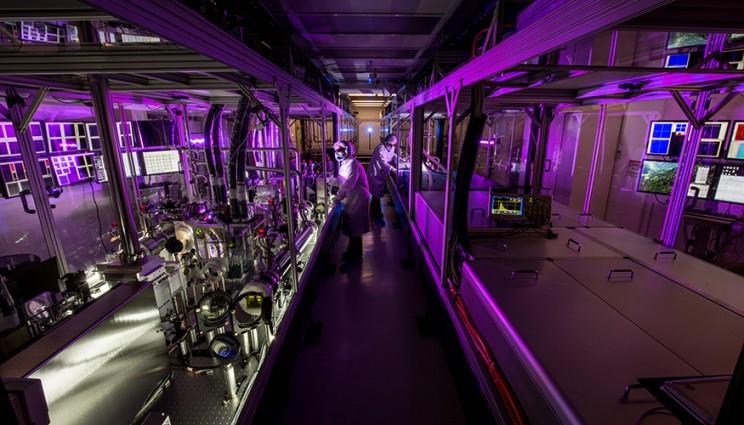Scaling laser output pulse to high energy levels requires large amounts of energy stored in and extracted from the gain medium. In the current art this is normally achieved by multi-passing the laser beam through the gain medium which requires considerably greater complexity in terms of the optical elements and alignment.
This LLNL invention is an optical amplifier, wherein the gain element is in the form of a frustum and a spherically diverging laser beam is introduced into the gain medium via the small face of the frustum. In one embodiment, the pump beam is generated by one or more chromium-lasers that are counter-propagating, having been introduced through the large face of the frustum. The gain medium may be, for example, comprised of a neodymium-doped crystal, glass or transparent ceramic. The frustum can be circular, square, hexagonal, etc. in shape. The design features a near constant fluence within the gain element, where the divergence of the laser beam (which decreases the fluence) is compensated by a special longitudinal gain profile that adds the desired amount of energy to the extraction beam to maintain approximate constancy of the fluence. As gain media are characterized by a quantity known as the saturation fluence (F-SAT), given by the photon energy divided by the gain cross section, practitioners versed in the art know that the extraction is efficient when the beam has a fluence of about 1.5-2x the value of F-SAT.
- Enables efficient energy extraction at constant fluence (optimally: 1.5-2x the value of F-SAT).
- Enables highest energy levels to be achieved from a laser amplifier without inducing damage.
- Can be optimized to minimize parasitic amplified stimulated emission (ASE) losses and nonlinear distortions.
Scaling solid-state lasers to higher average powers and energies
Current stage of technology development: TRL 3-4
LLNL has filed for patent protection on this invention.
U.S. Patent Application No. 2023/0283036 Optical Amplifier published 9/7/2023


